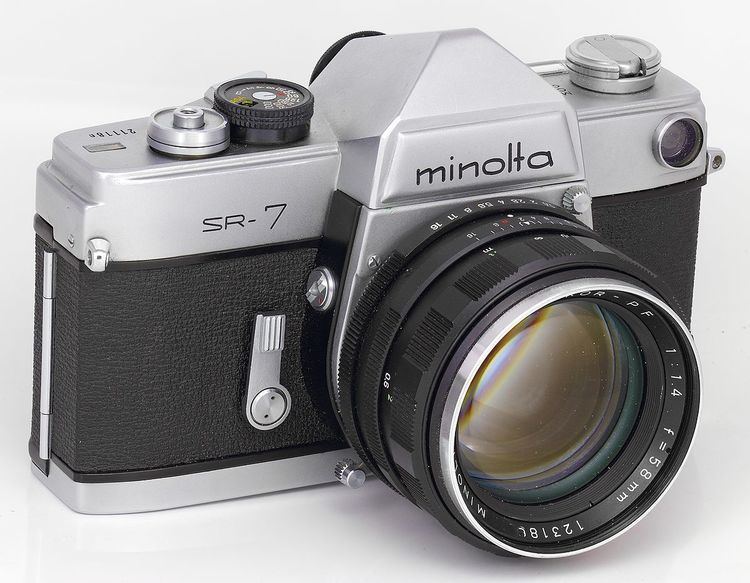Exposure Manual | Type 35 mm SLR Focus Manual | |
 | ||
ASA/ISO range ISO 25 to 6400 [manual] | ||
The Minolta SR-7 is a 35mm SLR made by Minolta, produced from 1962-1966. It is notable for being the first Single-lens reflex camera with a built in CdS meter. It is a full mechanical camera - batteries only needed to power the exposure meter. It is powered by a single PX625 battery (now discontinued, Wein Cell 625 batteries is an alternative.)
History
In 1958, Minolta's first SLR was released. It was the historic Minolta SR-2, which employed semi-automatic diaphragm and an instant return mirror. A year later, in 1959, the Minolta SR-1 was released. Basically a stripped down Minolta SR-2 with shutter speeds reduced to 1/500 of a second rather than the SR-2's 1/1000 of a second. Next came the Minolta SR-3. The camera had an ability to mount a selenium meter, which was then linked to the shutter speed. This particular camera was released in 1960, two years before the release of the SR-7.
The Minolta SR-7 stayed in production from 1962-1966, with minor changes in its mechanism and overall construction. Specifically, in the early versions, the meter had no switch to turn itself off, so the owner had to place its lens cap to prevent it from draining batteries. A year later, this was rectified and a switch was added. Mirror lock up function was also improved. The year 1965 marked another change on the camera - it was now squarer than previously, and the viewfinder was slightly changed, with the introduction of the Anglefinder and the Viewfinder Magnifier V.
Afterwards, late 1966, the SR-T series was introduced. These cameras now had TTL metering, which Minolta called the Contrast Light Compensator (CLC).
